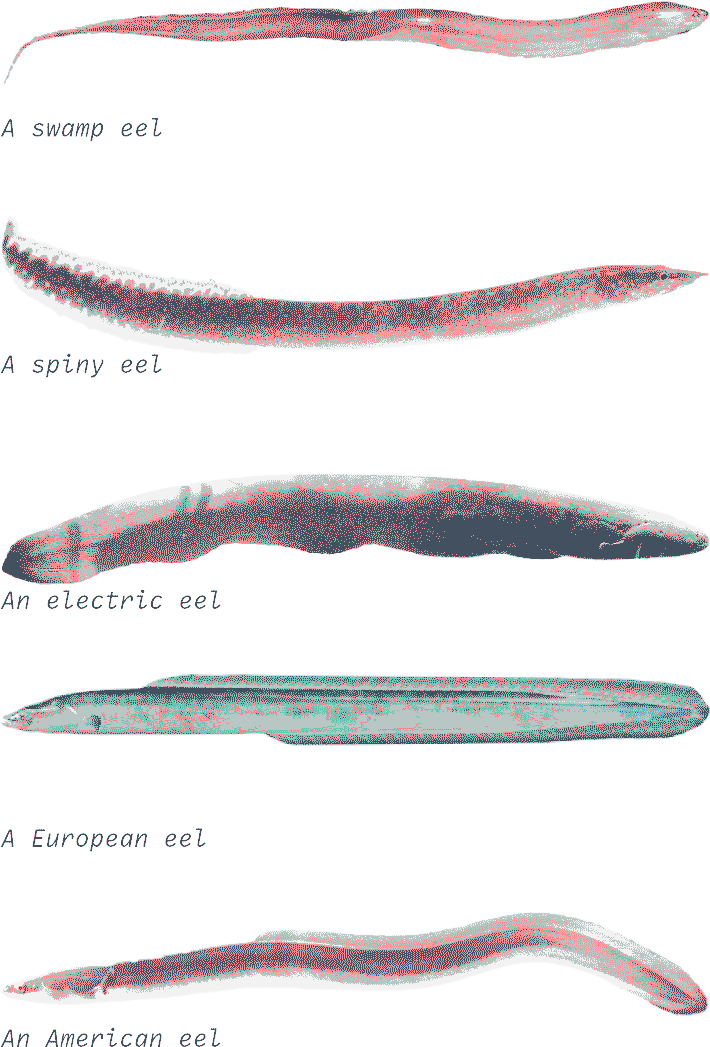‘Eel’ is the name that humans gave to elongated fish. Various species such as freshwater eels, electric eels, swamp eels, spiny eels , and not only fish, but also some amphibians, are called eels even though there is no ecological, physiological, or taxonomic relationship between them. What reduces those heterogenous bodies into the single category of ‘eel’ is the anthropocentric perception of their shape.
In "The Analytical Language of John Wilkins," Borges humorously highlights the arbitrariness and subjective nature of any attempt to categorize the world. One notable example is Wilkins' division of animals into categories such as "those that belong to the Emperor," "embalmed ones," "those that are trained," "suckling pigs," "mermaids," "fabulous ones," "stray dogs," "those included in the present classification," "those that tremble as if they were mad," "innumerable ones," "those drawn with a very fine camelhair brush," "others," "those that have just broken a flower vase," and "those that from a long way off look like flies."* This satirical take on classification ironically underlines the challenges and subjectivity involved in trying to systematically categorize the natural world.

.png)
*Borges, Jorge Luis. "The Analytical Language of John Wilkins." In Other Inquisitions 1937-1952, translated by Ruth L.C. Simms, 101-105. Buenos Aires: Sur, 1952.